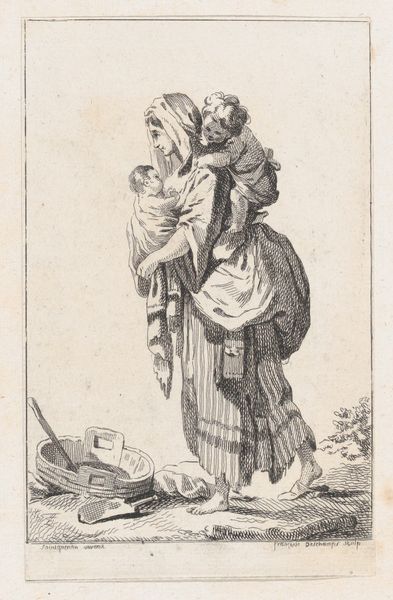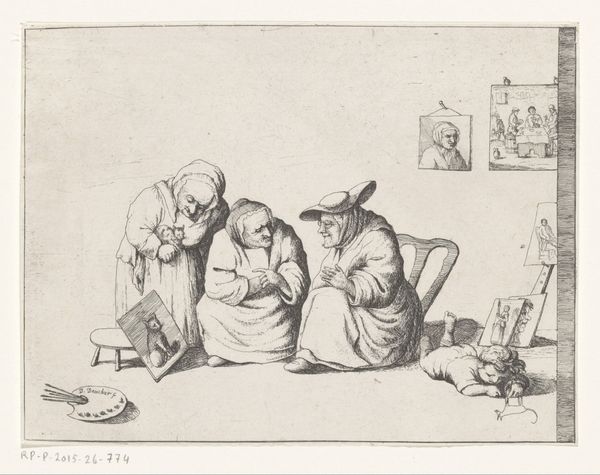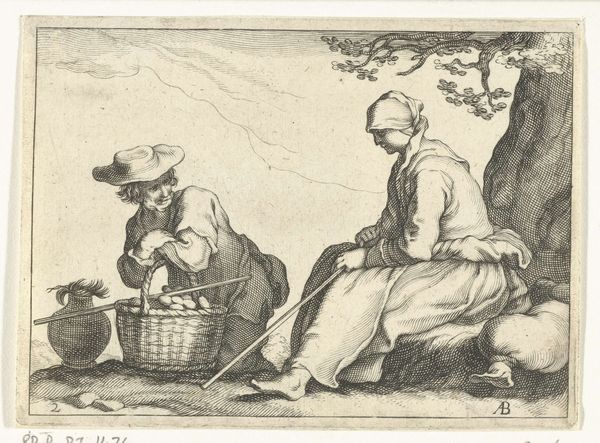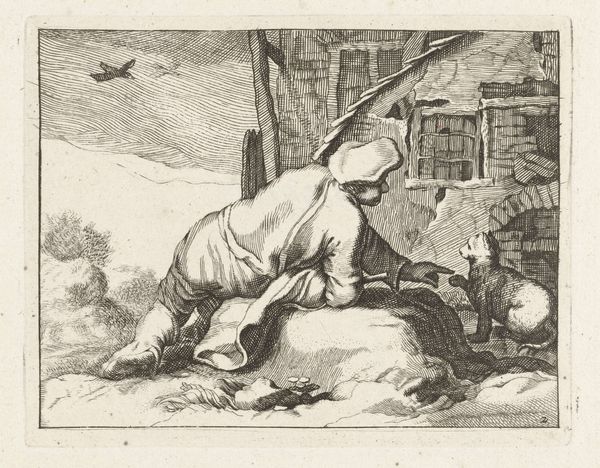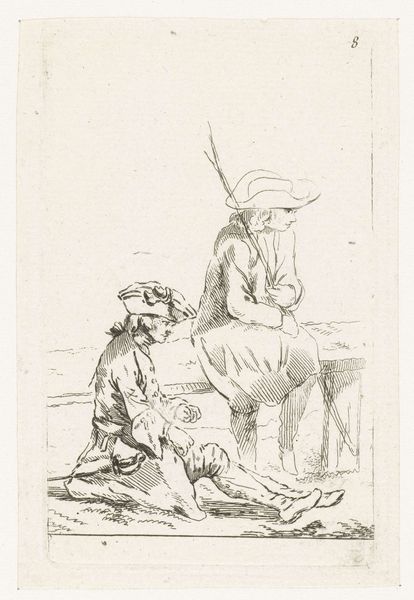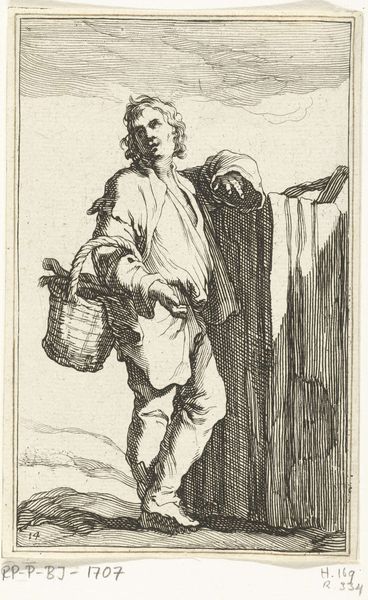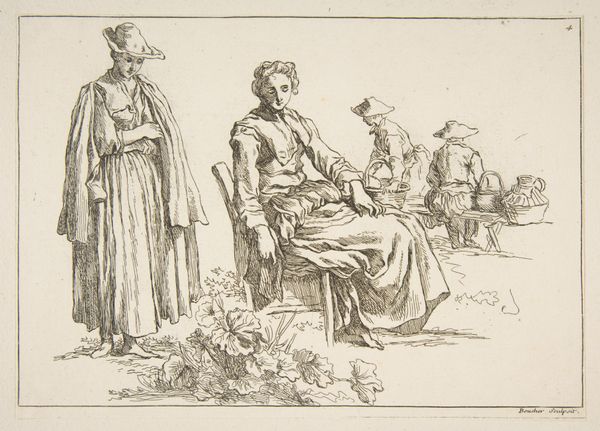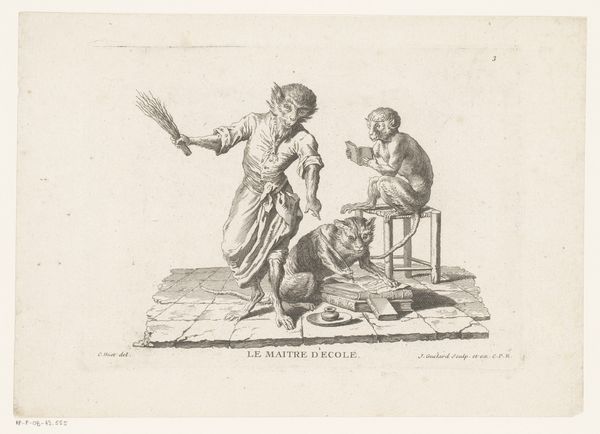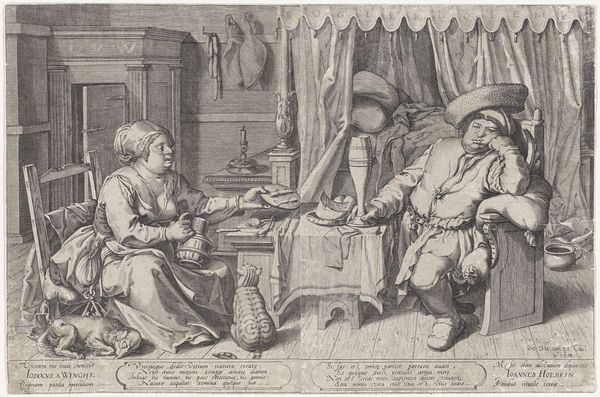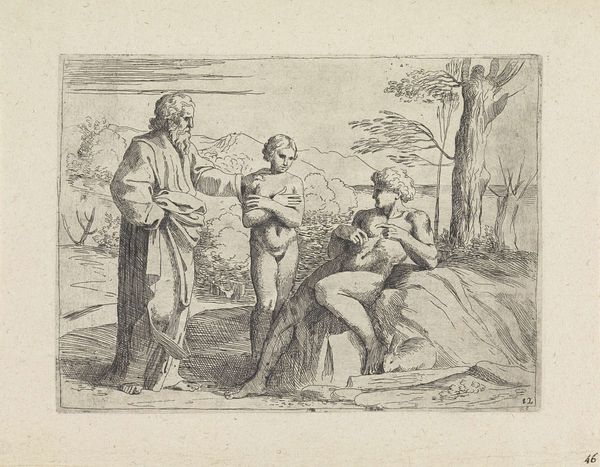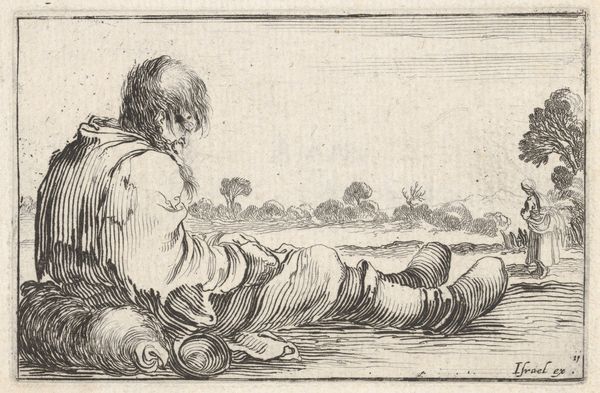
drawing, etching
#
drawing
#
baroque
#
etching
#
landscape
#
figuration
#
genre-painting
Dimensions: height 90 mm, width 118 mm
Copyright: Rijks Museum: Open Domain
Curator: This is “Resting Young Farmer” by Frederick Bloemaert, created sometime after 1635. It's a really striking etching currently held in the Rijksmuseum collection. Editor: It's so simple, but really evocative. There's a weariness in his pose that’s almost palpable. What's your interpretation of this work? Curator: I look at this image and I'm immediately drawn to the materiality of labor represented. Notice how the basket on his back seems as heavy as the ground he lies upon. The print, an etching, in and of itself reproduces labor in a multitude. How can it be distributed, used, and bartered? Bloemaert's choice of the etching medium democratizes art and connects with a broader audience. How do you view his posture? Editor: I guess, seeing it as 'labor' versus a pastoral image makes sense. The figure initially read as peaceful, maybe even romanticized, but thinking about what it would be like to sit just like this after manual work changes how I see it entirely. And the presence of someone else at a distance raises questions of inequality... I mean, were those his crops or theirs? Curator: Exactly. And thinking of the role prints played. Etchings allowed for reproduction and dissemination. The material becomes crucial, doesn't it? It could adorn a wealthy collector's portfolio or circulate among farming communities. Is that distant figure engaged in physical labor, or directing labor perhaps? Consider the artist and who he’s making the work for: are these scenes from his real experiences or romantic interpretations? Editor: Wow, I never thought about it like that. Now, seeing the artwork this way changes my whole perspective. What about his life experience makes him interested in such topics? Curator: The social and economic landscape was constantly evolving. Consider the rise of the Dutch Republic, trade, and the shifting roles of urban versus rural communities, labor practices… What did you initially think about his staff or walking stick and where is that mentioned with this context? Editor: At first, it seemed like just part of the bucolic imagery, a tool of his trade. Now I'm realizing the importance of thinking beyond that—connecting the material realities of that time to a single person as well as an art piece. Thanks! Curator: Absolutely! Thinking about the materials and mode of distribution, and that figure on the periphery opens our minds to questions of value, distribution, labor conditions, access, ownership and use. All material components and concepts critical in viewing any work!
Comments
No comments
Be the first to comment and join the conversation on the ultimate creative platform.
